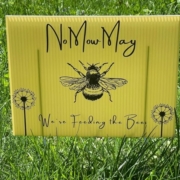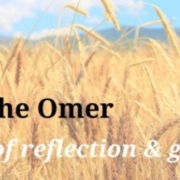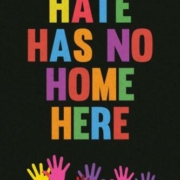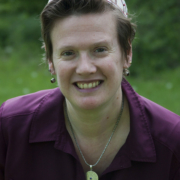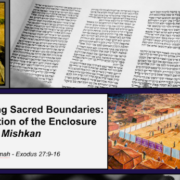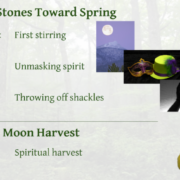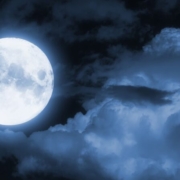Late this month we’ll reach the festival of Shavuot. When the Temple stood Shavuot was one of the Shalosh Regalim, the three big pilgrimage-festivals when we would travel en masse to Jerusalem to make offerings at the Temple. Shavuot is the culmination of the seven weeks of counting the Omer, and was once a harvest festival. (It still is, among Jews who farm.) But today Shavuot is best known as the holiday when we celebrate receiving Torah at Sinai.
“…Wise and compassionate stewardship of our land has been a Jewish value ever since the Garden of Eden. In this era of climate crisis, it’s important to care not only for our grounds, but also for the local ecosystem of which we are a part.
Here at CBI we’re doing a few different things to live out this Jewish value…”
This year the month of April opens with Pesach. I love all of the shining moments around the wheel of the Jewish year, but ever since I was a kid, Pesach has been one of my favorites. (And it still is.) Studies have shown that the Passover seder is the one Jewish ritual most commonly celebrated in this country — from Jews who aspire to experience Shabbat each week, to Jews who may only engage in one avowedly Jewish celebration per year, this one is always on the list.
“…If we’re feeling uncertain about how we’re going to get to a better place than this, we’re in synch with our ancient spiritual calendar. The story of the Exodus is one of venturing into the unknown. It’s a story of stepping into the sea, not knowing whether or how the waters would part. I take heart in remembering that now, as then, we don’t have to cross the sea alone….”
Rabbi Rachel’s March newsletter column — about Purim, and how our actions reflect us, and good things coming.
This guest post is the D’var Torah that CBI member and cantorial soloist Ziva Larson offered at Shabbat Morning Services on Saturday, February 25, 2023.
This morning a friend texted me a graphic showing the five weeks before the winter solstice, and the five weeks thereafter. Along with the image came a short message that read, simply, “We made it!” The literal darkest season of the solar year is behind us: cause for rejoicing indeed.
The coldest weather of the year is ahead of us, but the days have already started imperceptibly getting longer. Especially during years like this one, when the winter solstice falls during Chanukah, it can feel a little bit like the increasing light of our candles has called back the increasing light of the sun. We’re nowhere near done with the cold, but we are done with the darkening of the days. From here until the end of June, every day brings more light.
This year, the b-mitzvah students and I are studying Jewish values. At the start of the school year we focused on teshuvah, repentance or return — the value at the heart of the Days of Awe. After that, we began a unit on b’tzelem Elohim: the idea that we are all made in the image of God.
November this year mostly overlaps with the Hebrew month of Cheshvan. Among Ashkenazi Jews (Jews of Eastern European descent or who follow the customs of that part of the world) this month contains no holidays other than Shabbat.

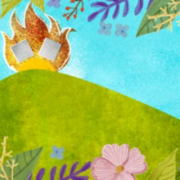 https://www.sefiracreative.com/
https://www.sefiracreative.com/